Sometimes Conversation Just Isn't Enough
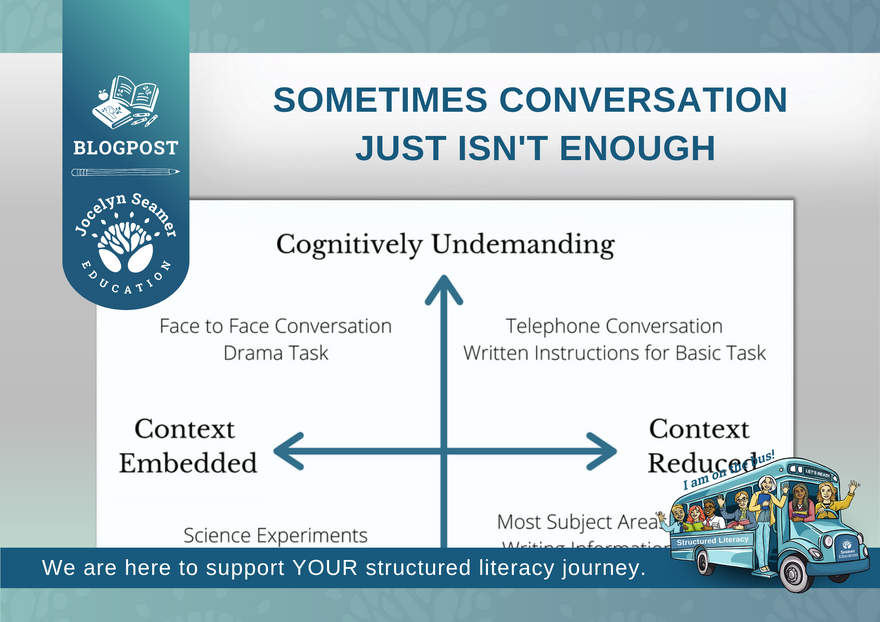
I have said it many times and I’ll say it again.
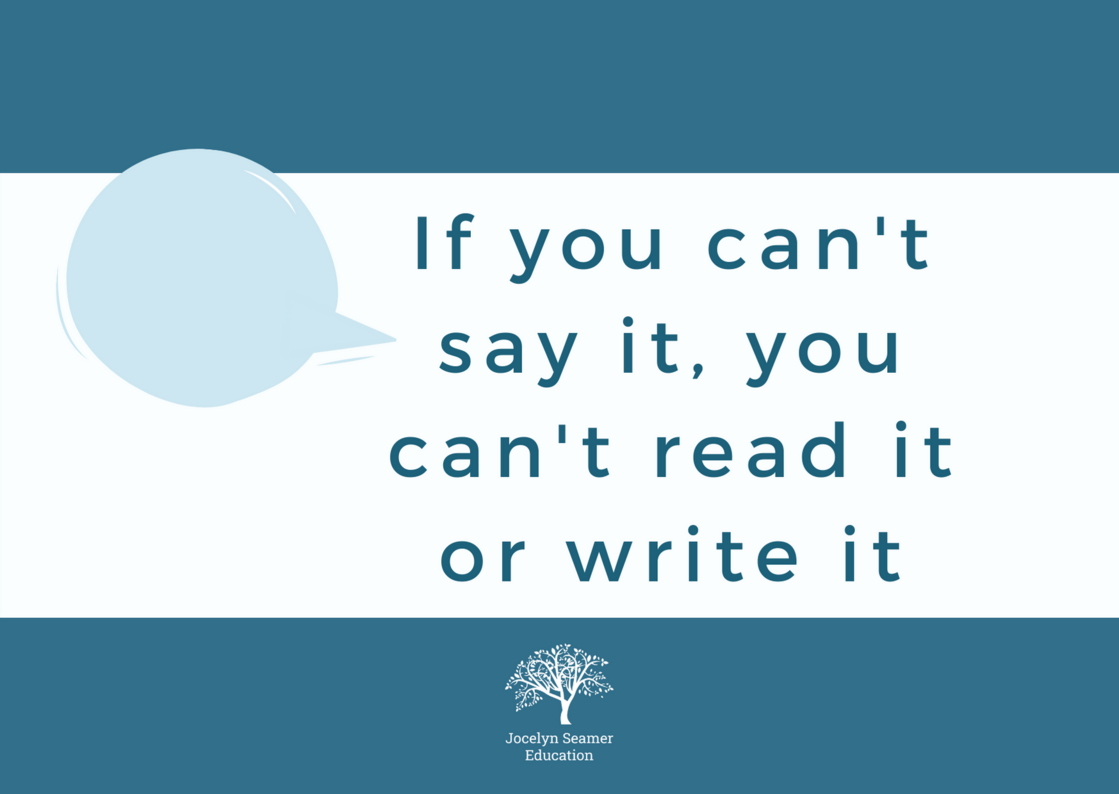
The simple fact is that our children don’t have enough time focusing on language at school. Now I know that they talk to each other in the playground and that they talk in the classroom when you don’t want them to. I know that you are likely already doing some ‘talk to your partner’ in your classroom (if you aren’t, please do start) and that you are possibly engaging children in oral sentence level instruction.
Even with all these things going on, there is a still more to consider.
Conversation alone doesn’t get it done.
There is something important to understand about language. Conversational language is all very well and good for conversations, but it doesn’t adequately prepare our students to hold their own in academic reading and writing. For many of our students ‘school language’ is like another dialect of English. As such, we need to explicitly teach it.
In this week’s post I want to outline an idea that I learned about when I was doing some study about how to teach EAL/D students. It is a theory developed by Jim Cummins and suggests two kinds of language:
- BICS (Basic Interpersonal Communications Skills) – Cognitively undemanding language used for everyday purposes.
- CALP (Cognitive Academic Language Proficiency) – Cognitively demanding language required for more challenging academic tasks.
He also proposes that there are two levels of tasks:
- Context embedded - Language that is supported by contextual clues such as objects, props, manipulatives, pictures, graphs and charts.
- Context reduced - few if any clues present to support the spoken or written words to help make the language understood.
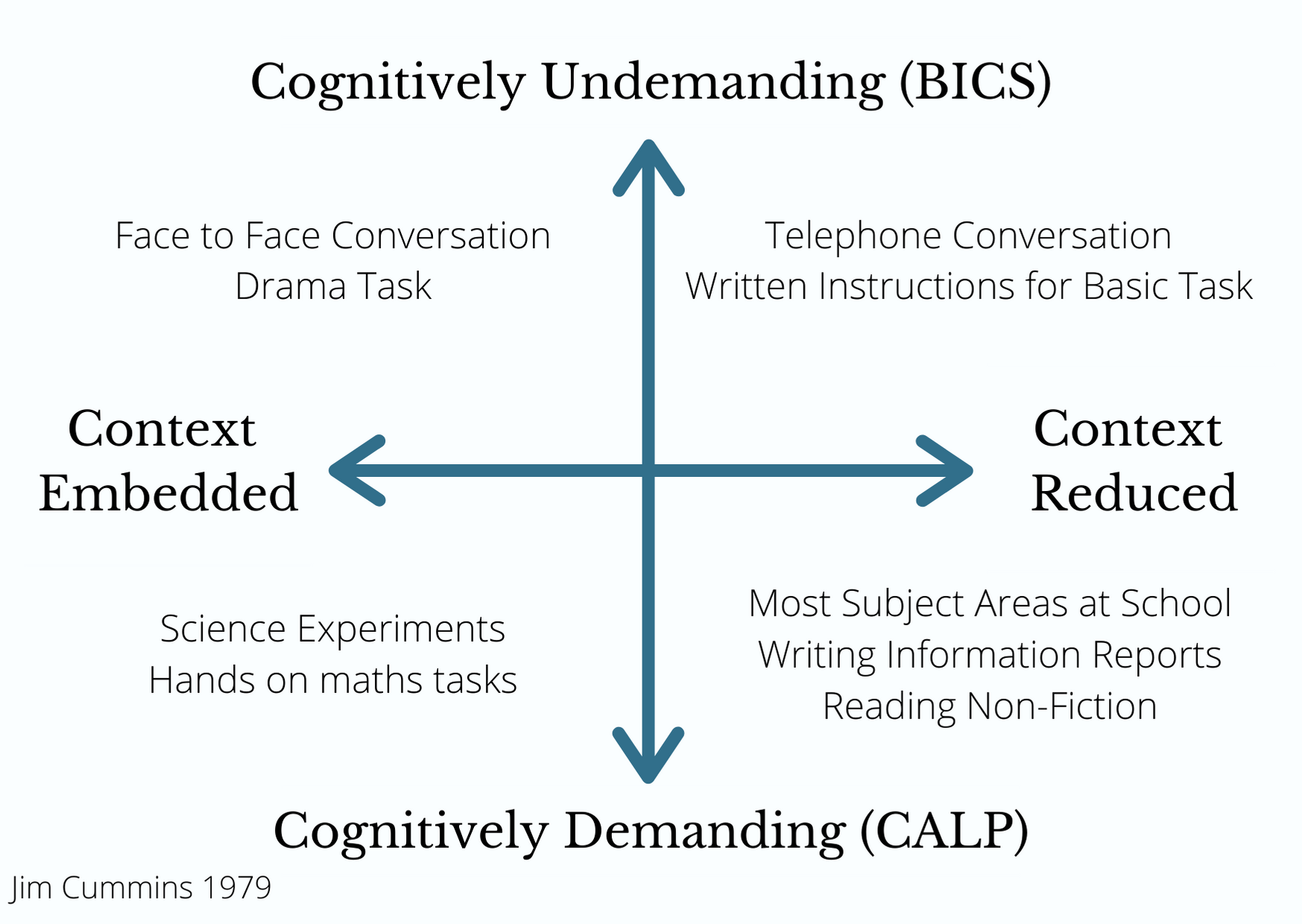
This theory relates to people learning to speak English as an additional language or dialect. My purpose in mentioning it in this post, is not to argue its merits in EAL/D instruction but to suggest it as a useful framework to help classroom teachers think about language.
When we encourage children to talk with each other in our lessons, how much of what we focus on is BICS and how much is CALP? It is quite possible that our students are doing a lot of talking and writing, but not really improving their academic language all that much.
So how do we ensure that we are focusing on more than just conversational skills?
The answer? Choose quality mentor texts that are a model for the language we want our student to develop.
How do we choose the right text?
Vocabulary is an obvious place to start. Selecting Tier 2 vocabulary to teach will enable your students to have a broader and deeper understanding of what they are saying and writing. This work can begin in the foundation year. Choose texts that contain great Tier 2 vocabulary. But which words? Averil Coxhead’s High-Incidence Academic Word suggests a list of 150 tier 2 words that may be useful to focus on. You can find that list here. Of course it isn't an exhaustive list of tier 2 words, but it does provide a useful starting point for word selection. Preference high utility words that can be used by the student across contexts and will be valuable into the future.
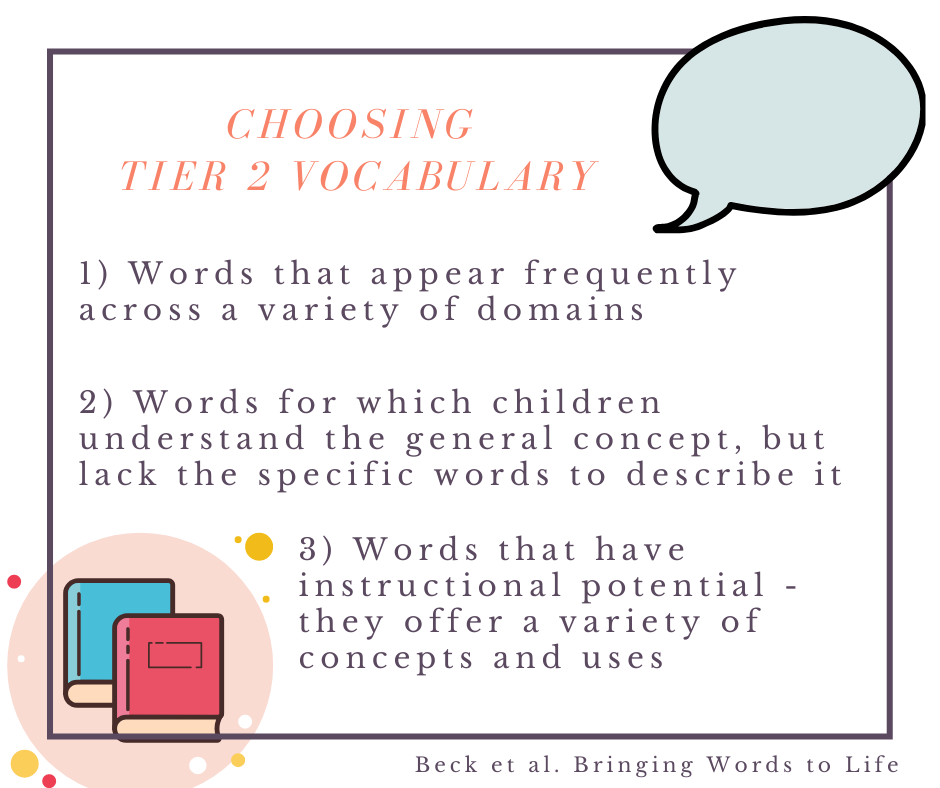
Sentence Structure and grammar is a 2nd area to focus on. It is important to teach a variety of sentence structures and role of conjunctions and punctuation. Consider the following:
- The apple was red and it was delicious. I didn’t eat it.
- Despite the fact that the apple was red and delicious, I didn’t eat it.
- Because the apple was red and delicious, I didn’t eat it.
- The apple, that was red and delicious, was not eaten that day.
Sentence 1 states facts. Sentences 2,3 & 4 invite analysis and indicate a deeper meaning. Working with sentences with more complex structure and conjunctions, first in more and then less familiar contexts, moves our students into CALP and helps them to both read and write with more complex language.
Text Structure
Vocabulary and sentence structure are not the only parts of ‘school language’ that children will need to be taught explicitly. Text structure is also an important consideration. Different genres of text have different structures and having a solid grasp on this concept enables students to both comprehend texts and write them. But it isn’t enough to simply provide a ‘scaffold’ and explain it. Students need a great deal of ‘input’ in the different text structures so that they develop familiarity with them. This doesn’t mean that we require young children to produce complete pieces of text before they are ready, but rather we need not shy away from providing a range of model texts of different kinds.
Picture books are a terrific start. Good ones contain rich vocabulary, a range of sentence types and a depth of story and concepts that engage and inspire children. We also need to provide exposure to a range of other texts such as poems, information reports, letters and discussions alongside the more specific and formal study we do of texts. I call this kind of thing, ‘exposure without expectation’. Immersing children in a range of texts helps them to internalise the rhythm and structure of those texts so that when it is time to examine structure more formally, we have already ‘built the field’. Once they are ready for more explicit and formal study of the genres, children will learn about the language that accompanies each.
You might be thinking that these three areas sound familiar. You would be right.
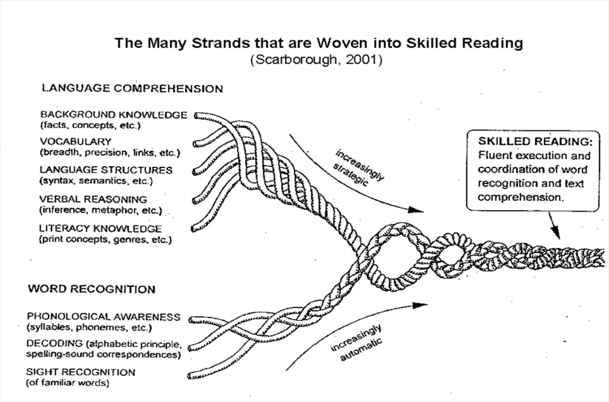
What I am describing sits at the top of Scarborough’s Reading Rope and, alongside general transcription skills, is vital for children’s reading comprehension and writing development. Another way to think of it is in terms of the components of composition outlined below.
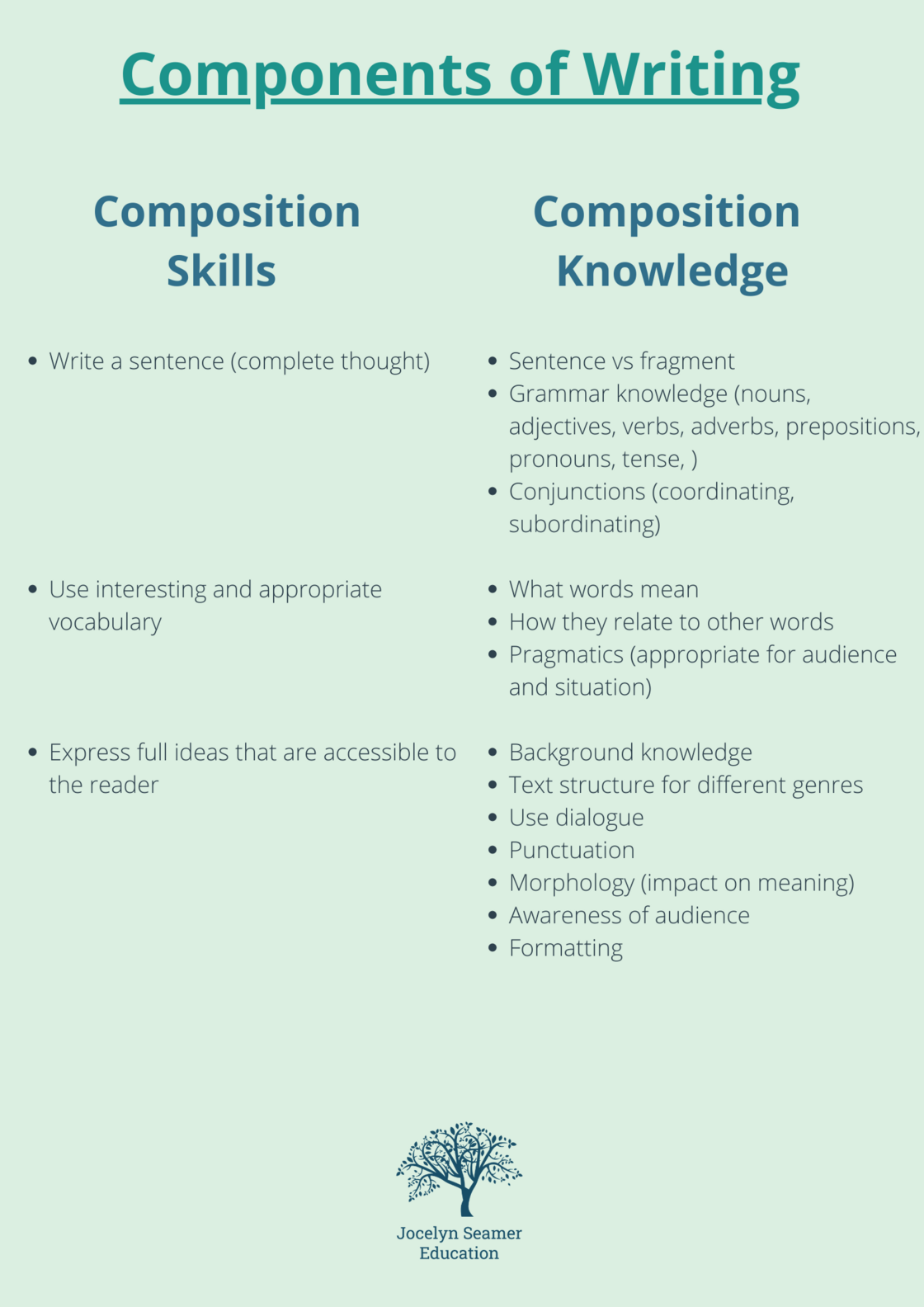
There isn’t the scope to examine the ‘how’ of BICS and CALP in this post, but I will say one thing. Focusing on a ‘do, talk, record’ model of teaching will set your students up for success. For every new element of language you wish you teach, you need to work through the explicit teaching model and the ‘do talk record’ model. This provides the necessary scaffolding and support for students.

BICS (Basic interpersonal communication skills) and CALP (Cognitive Academic Language Proficiency) provide a useful framework for thinking about how we focus on the language we teach in our classrooms.
The simple fact is that if we wish to increase our student’s writing output, we must (alongside transcription development) focus on increasing their oral language proficiency in both conversational and academic language.

 Jocelyn Seamer Education
Jocelyn Seamer Education
0 comments
Leave a comment